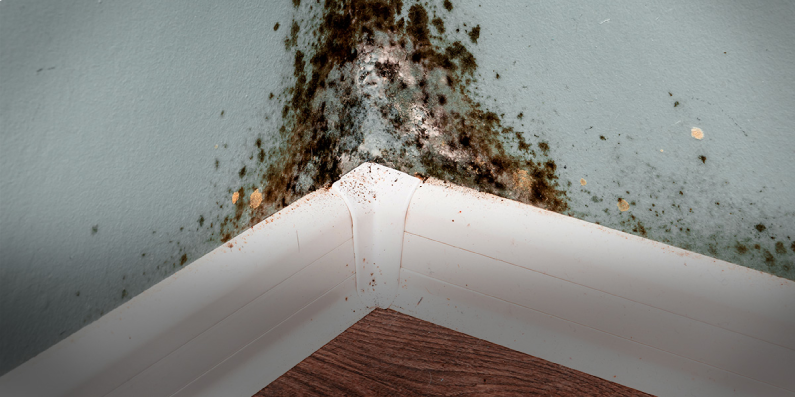Help! My Home is Humid & Musty
Last Edited: 4/11/24
The level of humidity in your home plays a vital role in the health of your home and family, and measures should be taken to control the amount of moisture in the air for optimum comfort and safety. If you are looking for expert advice on how to remove moisture and humidity from your indoor environment, look no further—the skilled professionals at Mr. Handyman can help, with these tips to prevent excess moisture and steps you can take to remove it.
How Much is Too Much?
Ideally, indoor relative humidity should be between 30 and 50 percent, which can be accurately identified using an inexpensive hygrometer found at your local hardware or home improvement store. If humidity levels are too low, you may experience the symptoms and more:
- Static electricity
- Chapped lips
- Scratchy throat
- Dry skin
- Itchy, irritated eyes
- Shrinkage in hardwood flooring and furniture
Conversely, humidity levels above 60 percent can cause the following:
- Increased asthma and allergy symptoms
- Condensation on windows
- Mold and mildew growth
- Structural deterioration
- Pest infestation
- Musty odors
How to Get Rid of Humidity
Once you begin to see warning signs of high humidity, reduce the level of moisture in your home as soon as possible. Follow our tips to improve the quality of your indoor air and prevent further damage to your health and property:
Identify the Source
It's important to determine why the humidity is so high inside your home, so the cause can be eliminated. Are exhaust fans working in the kitchen and bathroom? Does your dryer vent to the outside? Do you have a humidifier running full-time? Is there a leak in the plumbing? Is there a leak in your foundation or roof? Correcting or repairing any issues is the first step toward reducing humidity.
Clean Up
Mold can spread quickly, so it's imperative that you treat and remove visible mold at the first sign. Wipe up spills or leaks to eliminate standing water and prevent mold and mildew.
Increase Ventilation
Kitchens, bathrooms, laundry rooms, and basements are areas where moisture tends to accumulate. Increase the ventilation in these areas by doing the following:
- Turn on vent fans when cooking, showering, doing laundry, or running the dishwasher, and ensure they vent to the outside and not the attic.
- When temperatures permit, open doors and windows to circulate the air in your home.
- Use ceiling and floor fans to keep air moving.
- Ensure supply and return vents are open and unobstructed by furnishings or drapery.
Turn Up the AC
During the summer months, your air conditioner (AC) not only cools the air, it also helps to remove excess moisture. Keep your AC in good repair by having an annual inspection, and ensure the unit is correctly sized for your home.
Install a Dehumidifier
A portable or whole-house dehumidifier can effectively remove excess moisture, though it will need to be emptied frequently.
Use Desiccants
Desiccant dehumidifiers are ideal for small spaces such as a bedroom or closet, and work by absorbing excess moisture.
Tips to Control Indoor Humidity
Keep excess moisture at bay with these tips for humidity control:
- Perform periodic inspections of visible plumbing, and repair leaks as soon as possible
- Upgrade single-pane windows to energy-efficient double-pane glass
- Ensure the ground slopes away from your home rather than toward it
- Schedule yearly roof inspections to identify leaks
- Consider replacing carpeting with hard flooring
Contact Mr. Handyman
Contact your local Mr. Handyman for expert maintenance, improvement, and repair services. Call us to discuss your project and request service today!
 Click to call
Click to call


